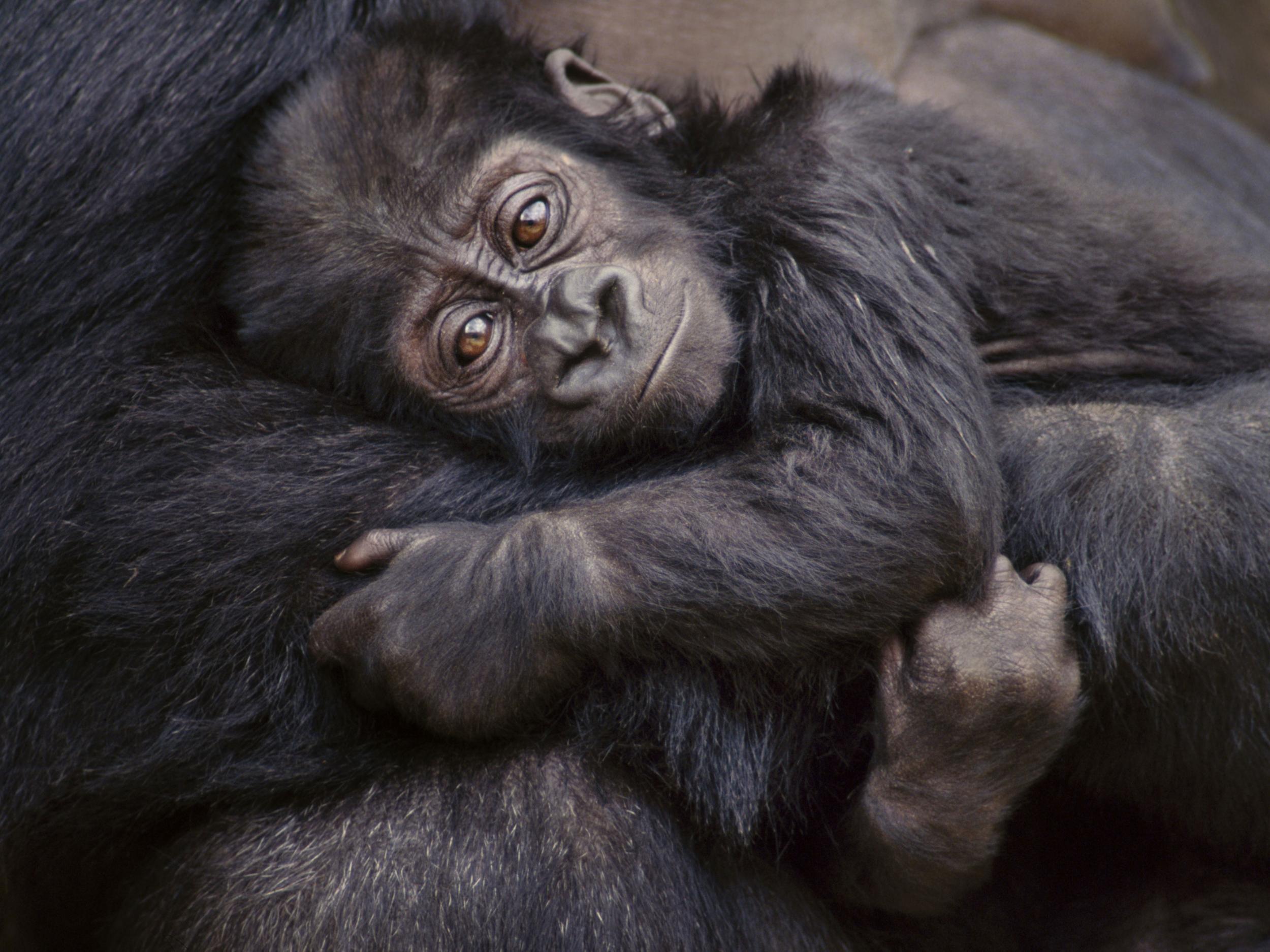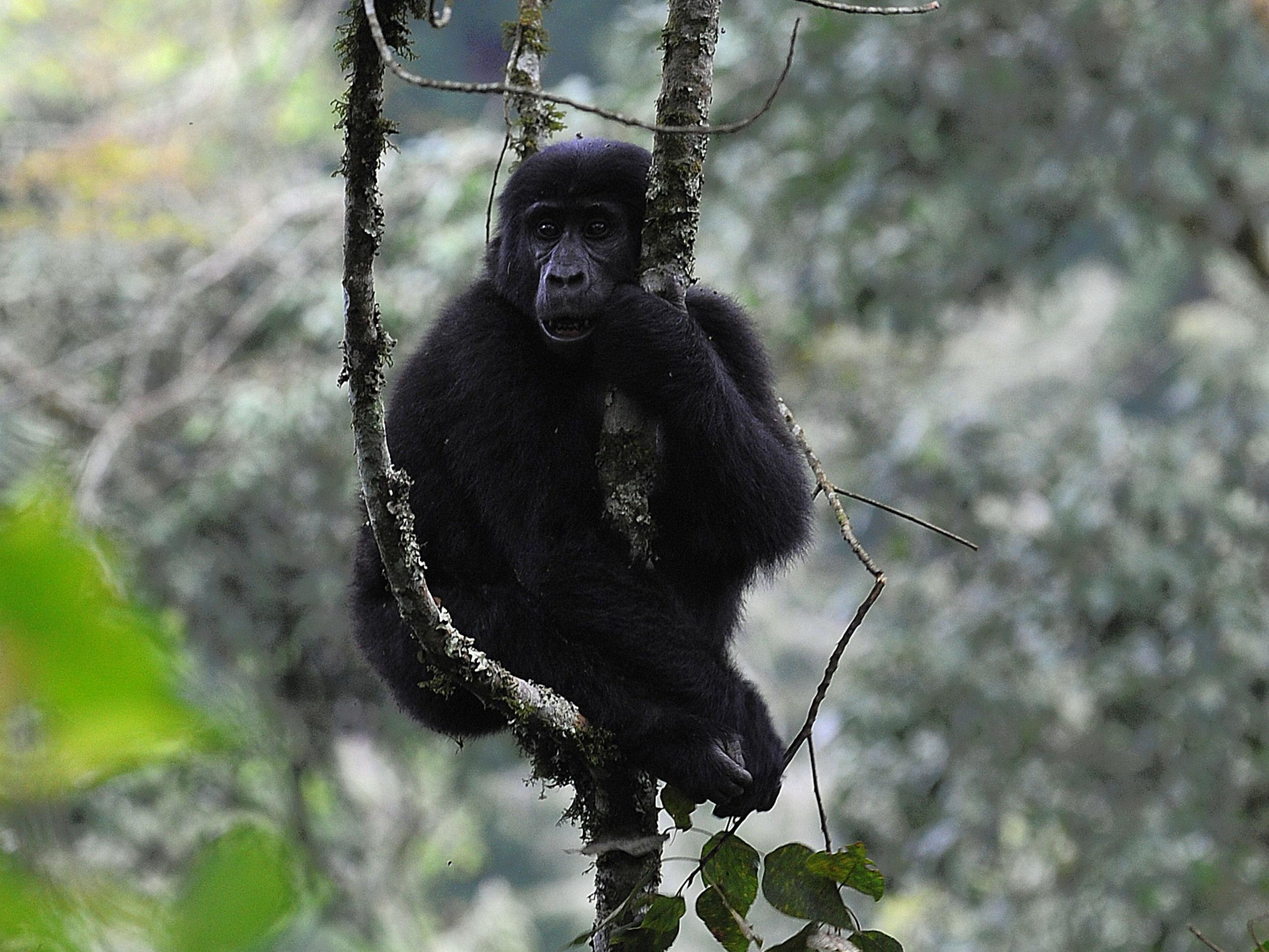Four out of six great apes are now critically endangered as 'global extinction crisis' escalates
'To see the eastern gorilla – one of our closest cousins – slide towards extinction is truly distressing'

The largest primate on Earth – the eastern gorilla – is now “critically endangered”, it has been officially announced after a staggering decline in their population in just 20 years. The decision by the International Union for Conservation of Nature (IUCN) means that four out of the six great apes – both types of gorilla and both types of orangutan – are feared to be on the brink of extinction.
It would perhaps not be surprising if they were to die out. Of more than 82,000 species assessed by the IUCN, nearly 30 per cent are facing that fate – almost entirely because of the actions of humans.
Geologists are currently considering reclassifying the Earth’s present geological epoch as the Anthropocene – a name that reflects the extent of our impact on the planet – partly because of what some scientists are already calling the sixth mass extinction of life on Earth. If they are correct, it is a slaughter comparable to the disappearance of the dinosaurs 66 million years ago, when a massive asteroid is thought to have hit what is now Mexico, sending a blanket of thick smoke around the Earth.
The new critically endangered classification for the eastern lowland gorilla, also known as Grauer's gorilla, was announced at the IUCN’s World Conservation Congress in Hawaii after researchers found its population had fallen by at least 77 per cent in just two decades.
The other type of eastern gorilla, the mountain gorilla, numbers only a few hundred.
Inger Andersen, the IUCN’s director-general, said: “To see the eastern gorilla – one of our closest cousins – slide towards extinction is truly distressing.
“We live in a time of tremendous change and each IUCN Red List update makes us realise just how quickly the global extinction crisis is escalating.
“Conservation action does work and we have increasing evidence of it. It is our responsibility to enhance our efforts to turn the tide and protect the future of our planet.”
The updated IUCN’s Red List now includes 82,954 species of which 23,928 – 28.8 per cent – are threatened with extinction. Other species added to those in trouble include the plains zebra, which has moved from the “least concern” category to “near threatened” after a 24 per cent decrease in its population in 14 years from 660,000 to about 500,000, largely because of hunting.
Three species of African antelope – the bay duiker, white-bellied duiker and yellow-backed duiker – were also moved from least concern to near threatened.
But it is perhaps the prospect of losing the gorillas that is the most shocking.

Mountain gorillas have been critically endangered for 20 years with only about 300 mature individuals left, although recently wildlife tourism has been credited with helping their numbers start to recover.
Two decades ago, Grauer’s gorilla had a relatively healthy population of some 17,000. But the "Great African War" which broke out in the Democratic Republic of Congo in the late 1990s turned the area into one of the most violent places on the planet. Despite the formal end of the conflict in 2003, armed gangs continue to control parts of the forests where the gorillas live – largely because of the money to be made from mining for gold, diamonds and metals such as coltan, which is used in mobile phones.
These mines are often deep in the forest, where there are no farms to supply food – so the miners go out hunting. Easy to track through the forest, the gorillas have been shot in high numbers.
Dr Andrew Plumptre, of the Wildlife Conservation Society, was the lead author of a report published earlier this year, which estimated the total population of Grauer’s gorilla at just 3,800 – a decline of more than 77 per cent in 20 years. Other methods of estimating their population put the decline even higher at 94 per cent.
“If the current situation persists, we are going to lose them and we could lose them in as soon a time period as 10 to 15 years,” Dr Plumptre told The Independent. “It’s the largest ape on the planet. It would be very sad if that happened and the world wasn’t willing to move and to do more to try and stop it.”
He said the increase in the small number of mountain gorillas was because “they generate so much money from tourism”. “Needing an economic reason to save them – it’s sad, but it seems to be the only thing that’s saving them,” Dr Plumptre said.

However, wildlife tourism is currently not an option in the area of the Democratic Republic of Congo that is home to most eastern gorillas, because of the presence of the armed gangs.
Attempts to disarm them are being made by the government but Dr Plumptre said more had to be done to restore order.
“It would improve security for people in the region. There are many benefits for people as well as the apes,” he said. “It is the rape capital of the world. Hundreds of people are killed every year just for small things and everyone turns a blind eye to it.”
The two sub-species of western gorilla, the western lowland and cross-river, are also both critically endangered, as are the Bornean and Sumatran orangutans. Chimpanzees and bonobos, the remaining two great apes, are classed as endangered.
Last month, the head of charity International Animal Rescue (IAR) controversially claimed orangutans could become extinct in the wild within 10 years because of widespread deforestation.
However Erik Meijaard, a member of the IUCN’s primate specialist group and conservation group Borneo Futures, told The Independent: “I think unless there’s a meteor strike or some kind of Ebola, they are not going to go extinct – because we’re not going to let them go extinct.
“It’s really going downhill very rapidly but there are also a number of populations that are almost not threatened. Some populations are really quite safe and stable and increasingly stable with good support from government.”
On the IAR’s fears, he added: “I don’t mind people speaking nonsense but I think it’s really counterproductive. It gives the impression of hopelessness.”
Join our commenting forum
Join thought-provoking conversations, follow other Independent readers and see their replies
Comments
Bookmark popover
Removed from bookmarks